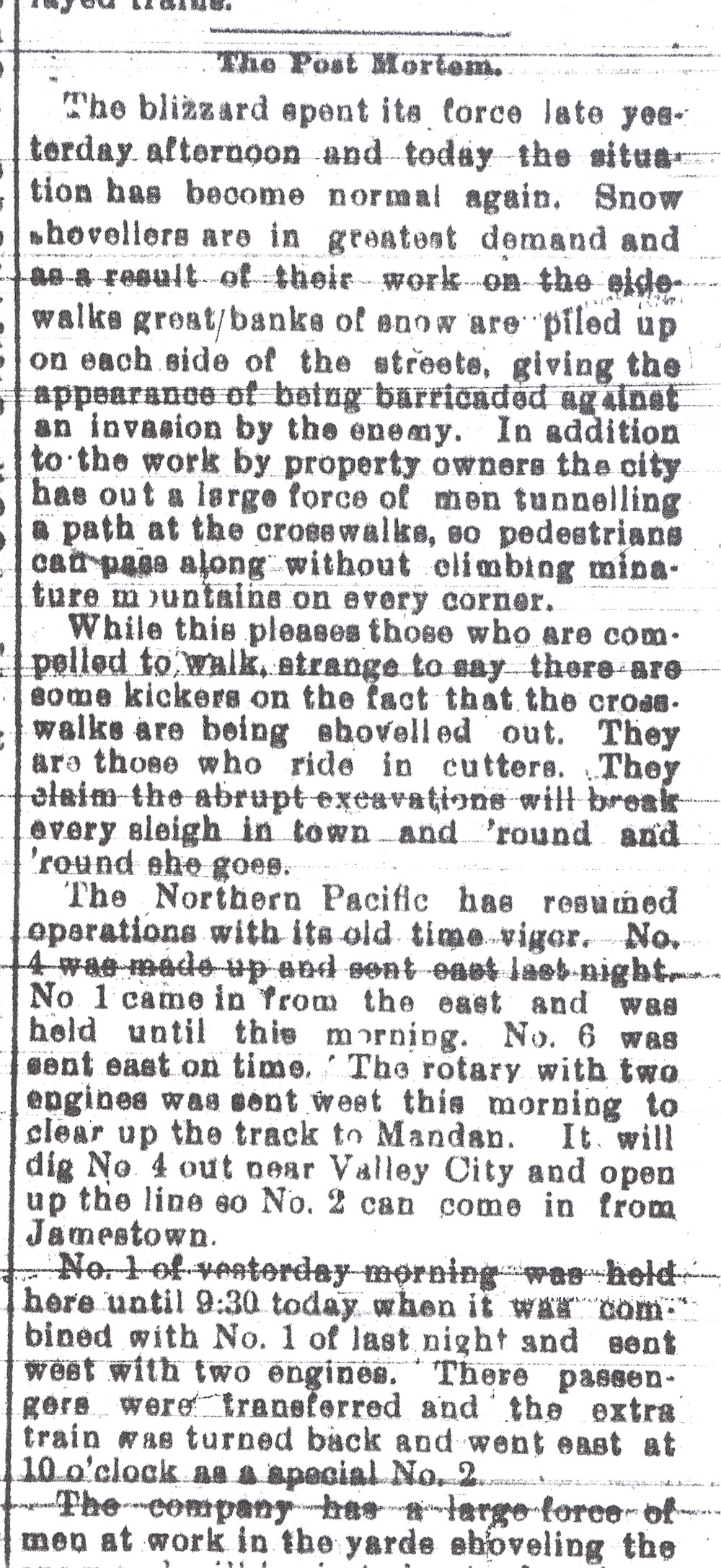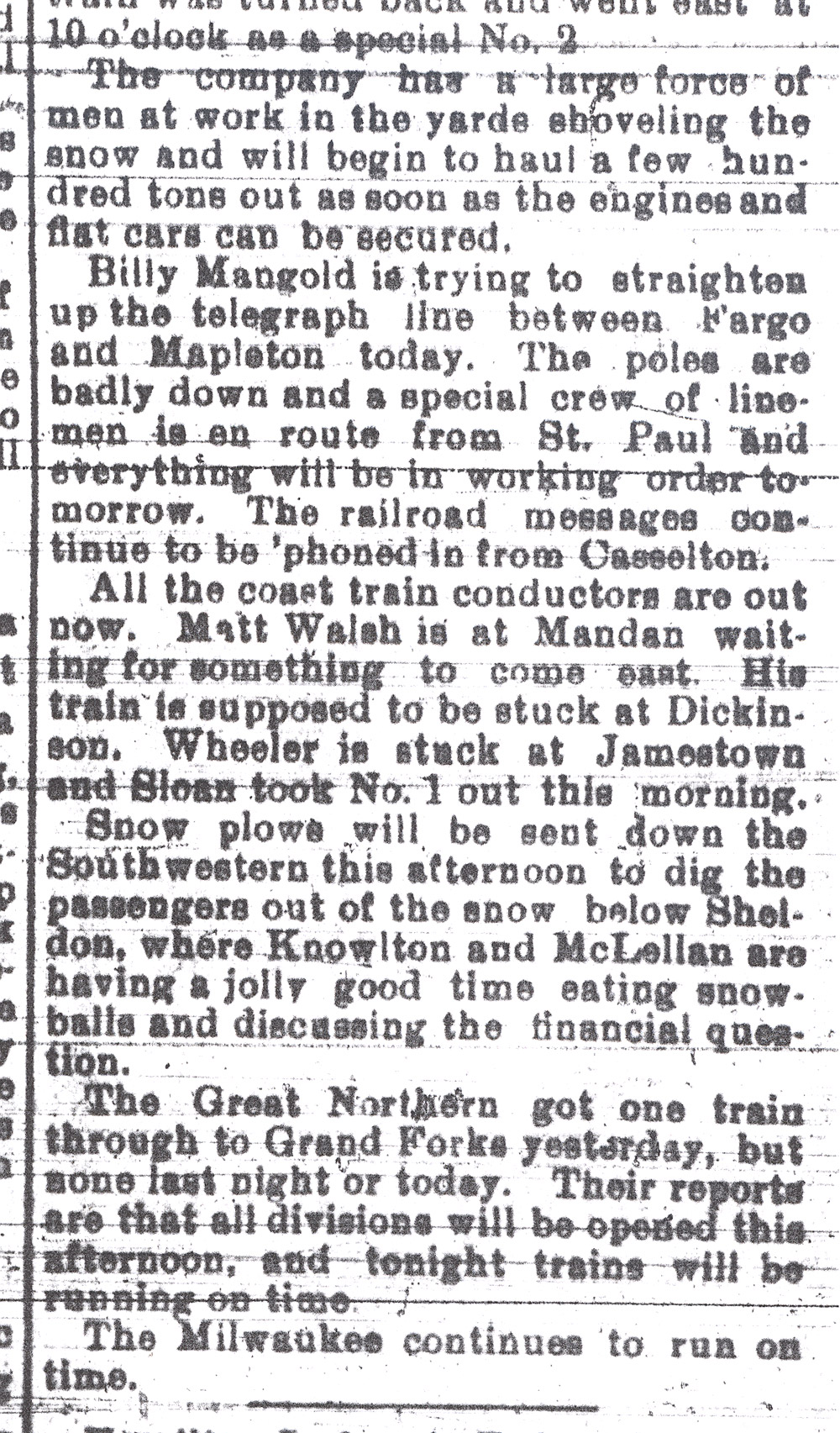The Great Plains is known for uncertain weather. Winter on the northern Plains can bring very low temperatures, high winds, and deep snow. A combination of severe weather can cause a blizzard. A blizzard is defined by the National Weather Service as having winds of at least 35 miles per hour, visibility of less than one-quarter mile, and lasting at least three hours. There are two situations in which this can occur. One kind of blizzard happens when snow falls with high winds and low visibility. The other kind of blizzard is often called a “ground blizzard.” This occurs when high winds pick up the snow that is on the ground and blows it around so that visibility is reduced. (See Image 1)
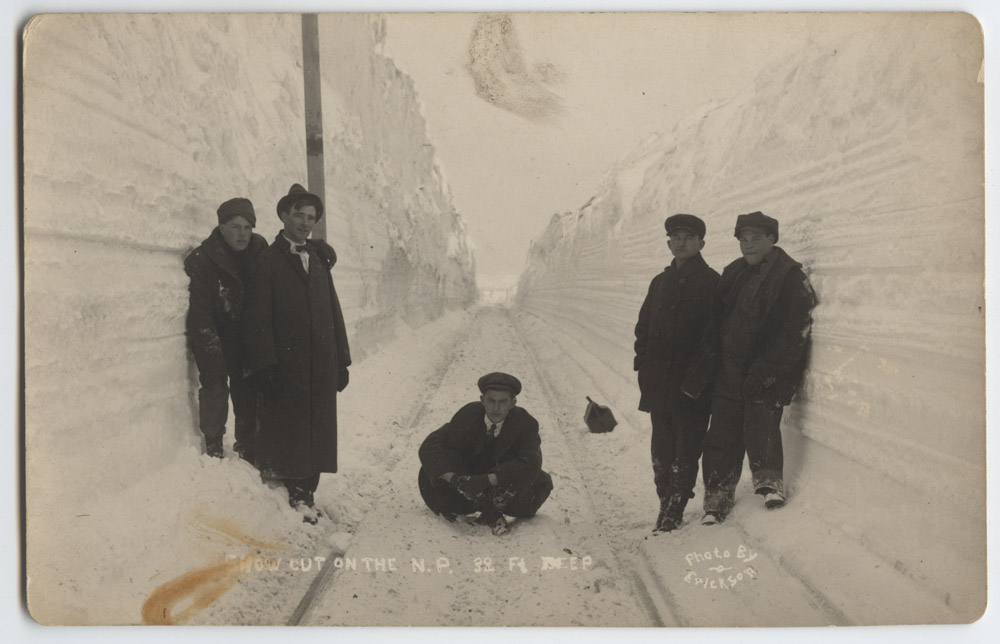
Pioneers remembered blizzards as being particularly dangerous. A blizzard could arise on a day that started out to be very pleasant. Storms often appeared suddenly and caught people out in the prairie. If they could not see to find their way home, they might die in the storm. Even a short walk from the house to the barn could be dangerous. (See Image 2) A person might miss the barn (yes, it is possible!) and wander off into the storm. (See Image 3)
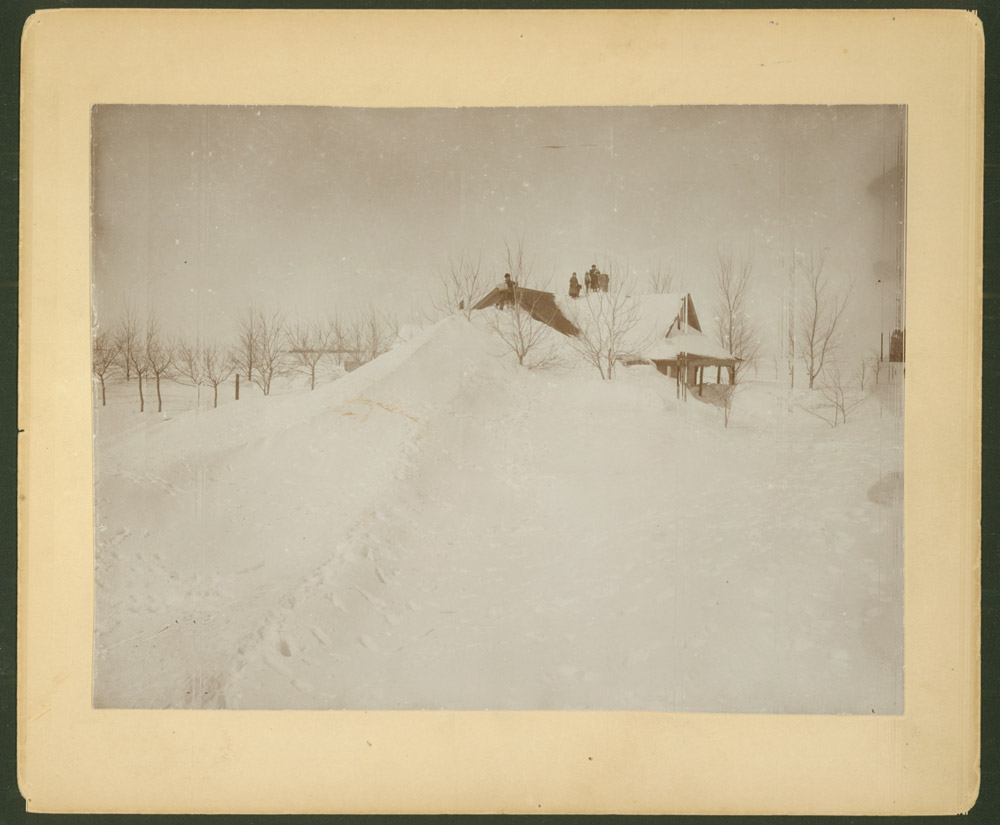
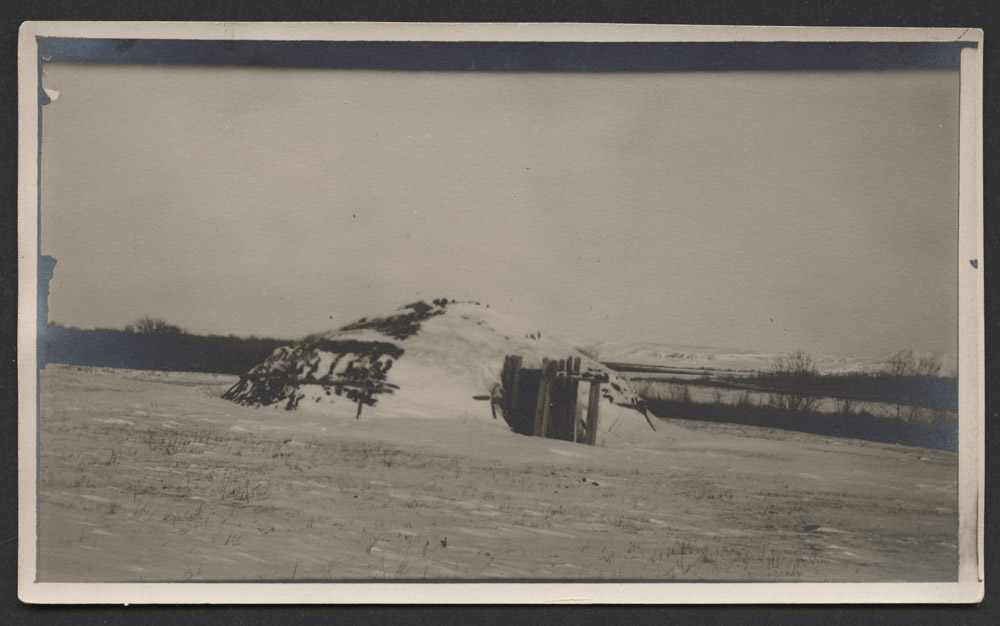
North Dakota can have several blizzards in one year or no blizzards at all. In 1997, eight blizzards – many more than usual - struck the Red River Valley. This variability is one of the reasons that blizzards can be deadly. It is hard to know what to expect. (See Image 4)

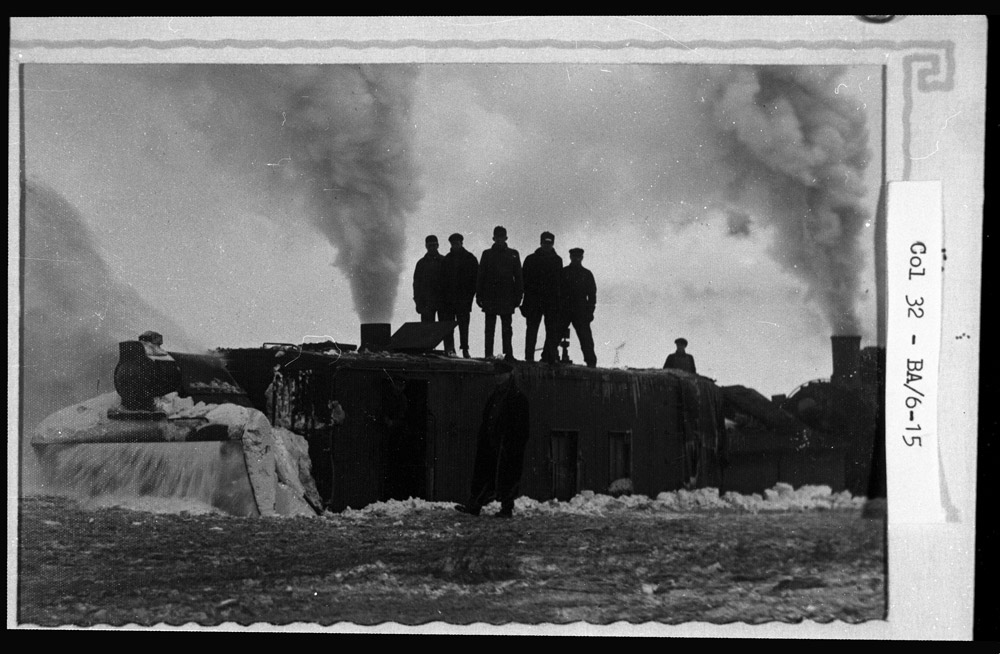
In 1896, a blizzard struck eastern North Dakota and much of northern Minnesota on Thanksgiving Day (November 26). In Fargo, one man died, and another was still missing two days later. (See Image 5) Another man died at Devils Lake. Several people reported frightening hours of wandering while looking for shelter in the city. (See Image 6) The blizzard brought severely cold temperatures. In northern Minnesota, the temperature dropped to 45 degrees below zero. The winter weather that began in the fall of 1896 contributed to severe flooding along the Red River and other North Dakota rivers in the spring of 1897.
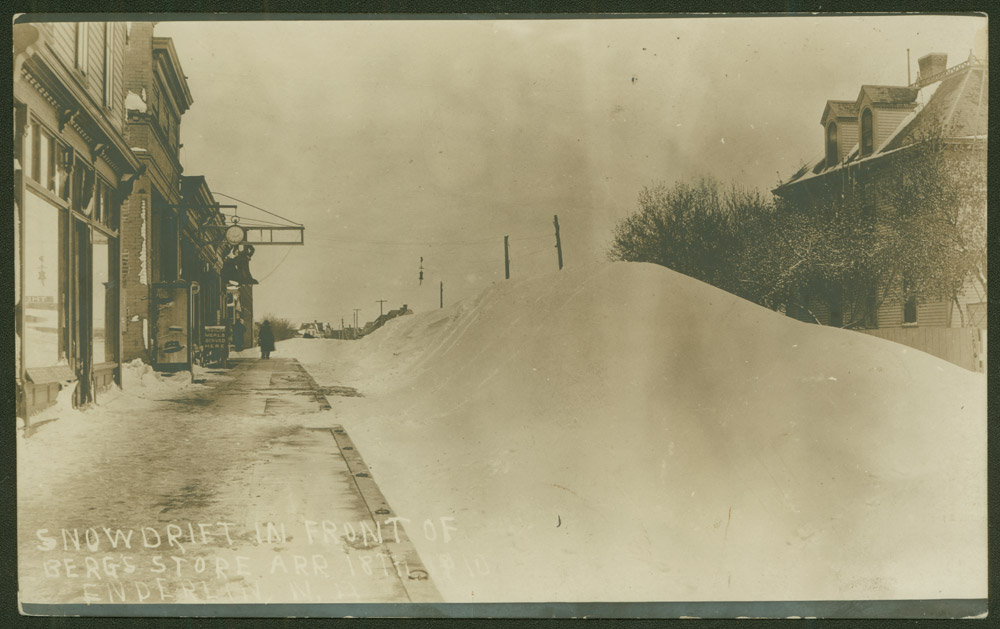
On March 16, 1920, a blizzard zoomed into North Dakota. This one took the life of a young girl, Hazel Miner, as she tried to save the lives of her younger brother and sister. (See Image 7) Her heroic story inspired North Dakota singer Chuck Suchy to write and record a song about Hazel Miner.
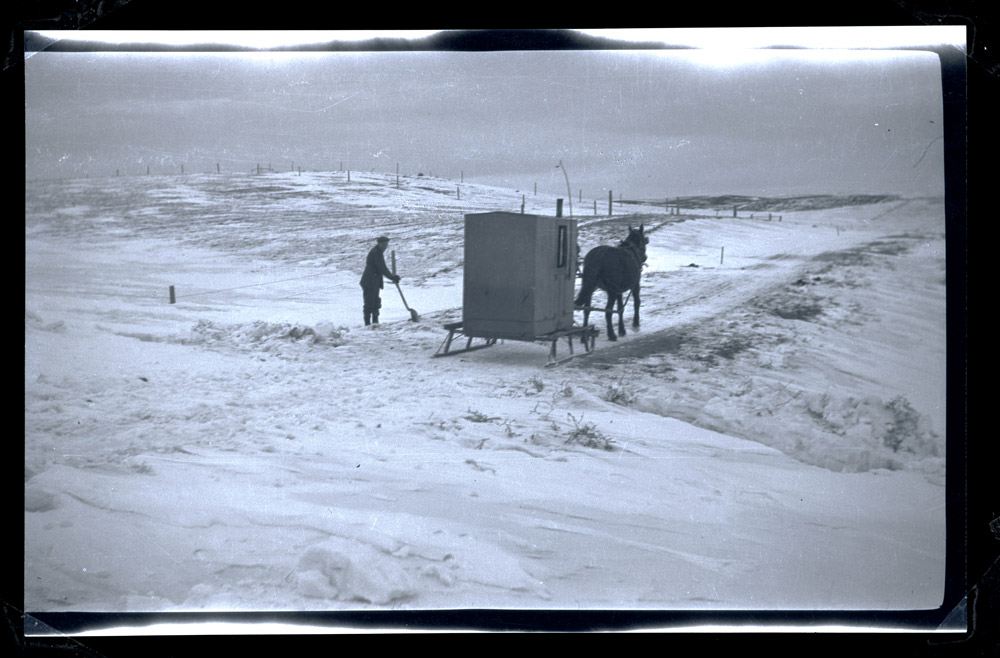
Why is this important? Many people think of North Dakota as a place where blizzards occur often every winter. This is not true, but fear of bad winters may be one of the qualities that keeps the state’s population low.
Blizzards, like floods, interrupt business, endanger people’s lives, and cause great losses of livestock. However, winter snowfall is an important part of the total moisture North Dakota receives each year. After the snow melts into the ground, the moisture becomes available to help seeds sprout into crops during the summer.
The Thanksgiving Blizzard in Fargo, November 26, 1896
On November 26, 1896, a major winter storm hit eastern North Dakota. North Dakota residents were accustomed to blizzards. Still, there were some people who were caught outside as the storm hit and some who just believed it could not be that bad (See Document 1).
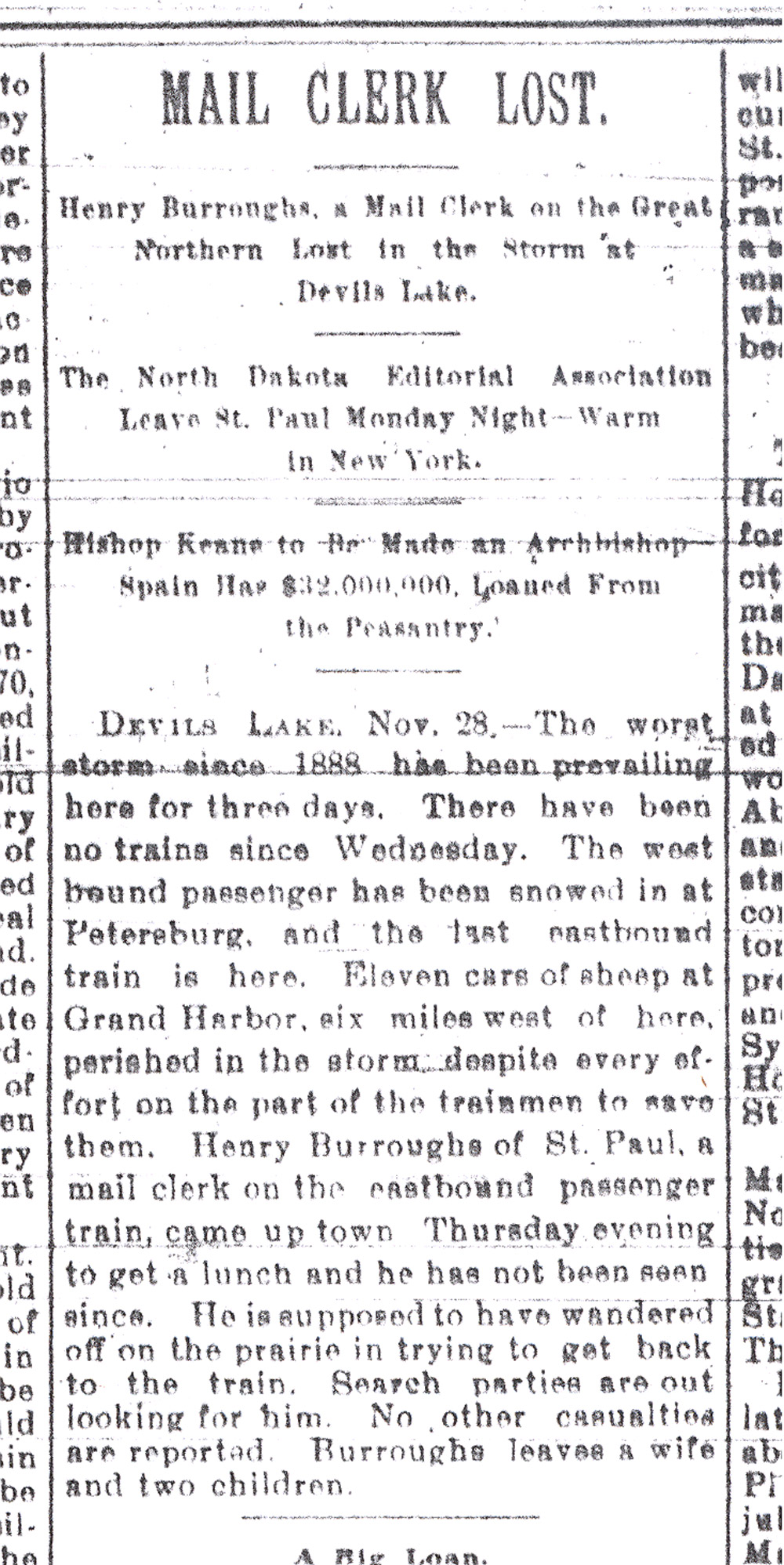

This storm was a bad one. Several people died in the storm, and some were saved when they stumbled upon a shelter before the cold wind stole their lives. Even in a city, where the winds were slowed somewhat by buildings, and city streets always led to shelter, some people were unable to find their homes (See Document 2).
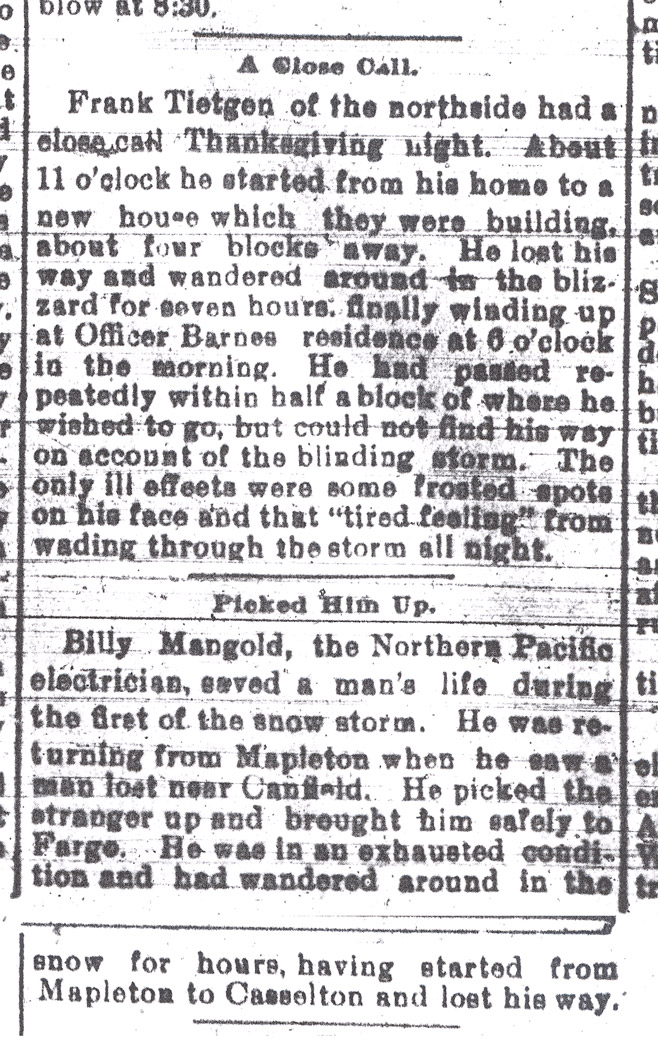
The Fargo Forum and Daily Republican recorded the storm’s damage and its effect on people and business. The trains were stalled while special snowplow trains were sent out to clear the tracks. (See Document 3) While the trains were idle, mail, food, freight, and people could not travel across the state. (See Document 4)
The spring of 1997 brought severe flooding to Fargo and the Red River Valley. This blizzard was only the first of several storms that laid snow deep across the valley. [Doc 5]
Why is this important? Blizzards are part of our lives on the northern Great Plains. Though we know that blizzards will be a part of every winter, we often forget how dangerous they can be. Blizzards also impact businesses that may have to close during the storm and spend extra money to clear away the snow and repair any damage the storm caused.
Blizzards also warn of high water in the spring when rapid snowmelt can cause flooding, especially in the flat ground of the Red River Valley. But snow also brings a significant portion of the necessary moisture North Dakota receives each year. Snow fills reservoirs and sinks down into the subsoil to nourish crops. We couldn’t get along without snow, even though it is sometimes hard to get along with it.
Theodore Roosevelt on Blizzards
Long before he became president, Theodore Roosevelt, lived and worked on a cattle ranch in western North Dakota. He loved the land, the people, and the hard work of ranching. In the spring of 1887, like most other ranchers of the badlands, he found that most of his cattle had died in blizzards during the winter. In those days, cattle lived out on the range all winter long. No one brought them hay, and there were no shelters other than those the cattle could find in draws.
Roosevelt often wrote about his experiences on his western North Dakota ranches. His articles on ranching were directed toward people who had never been to the West and who wanted to live the adventure without getting cold, wet, or tired.
This article was published in the very popular Century Magazine (vol 35, no. 5) in March 1888. Roosevelt wrote about how blizzards affected the open range cattle industry and the cowboys (pages 13 through 15.) This article is posted courtesy of the Theodore Roosevelt Center at Dickinson State University.
The Story of Hazel Miner
On March 15, 1920, a blizzard blew into Oliver County. (See Document 5)
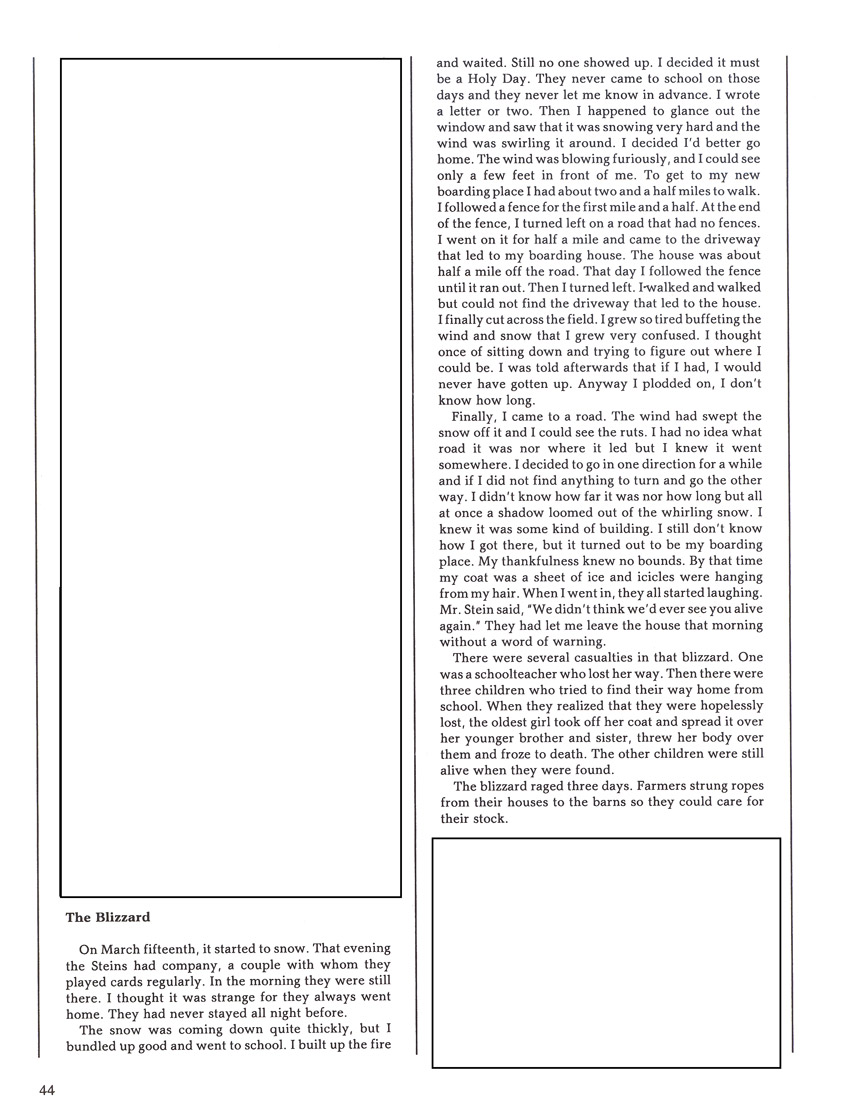
It was a Monday, and many children were at school when the blizzard struck. At the town of Center, three children of William and Blanche Miner were at school two and one-half miles from their farm home. The oldest of the Miner children was Hazel, age 15. (See Image 8) Her younger brother Emmet, 11, and sister Myrdith, 9, were also in school that day.
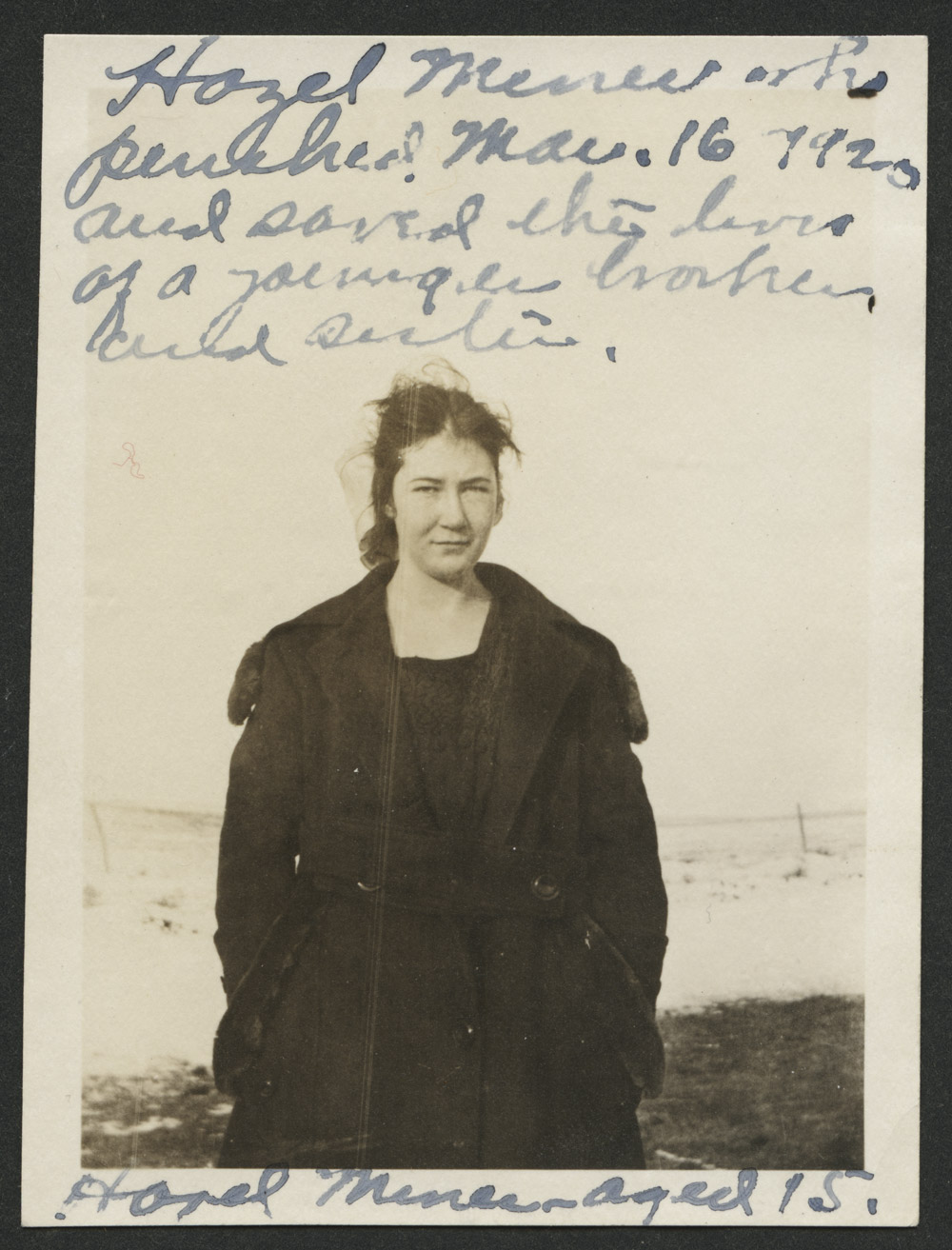
Hazel had driven her brother and sister to school in a sleigh that day, as she did on most snowy days. When the storm hit, the temperature was about 15 degrees above zero. The wind blew the snow, and very soon blowing snow blinded everyone who was outdoors.
As soon as the storm began, the children’s father set out on horseback for the school to guide their sleigh safely home. He arrived at the school house and hitched the horse to the sleigh. He told the children to wait on the sleigh while he got his saddle horse.
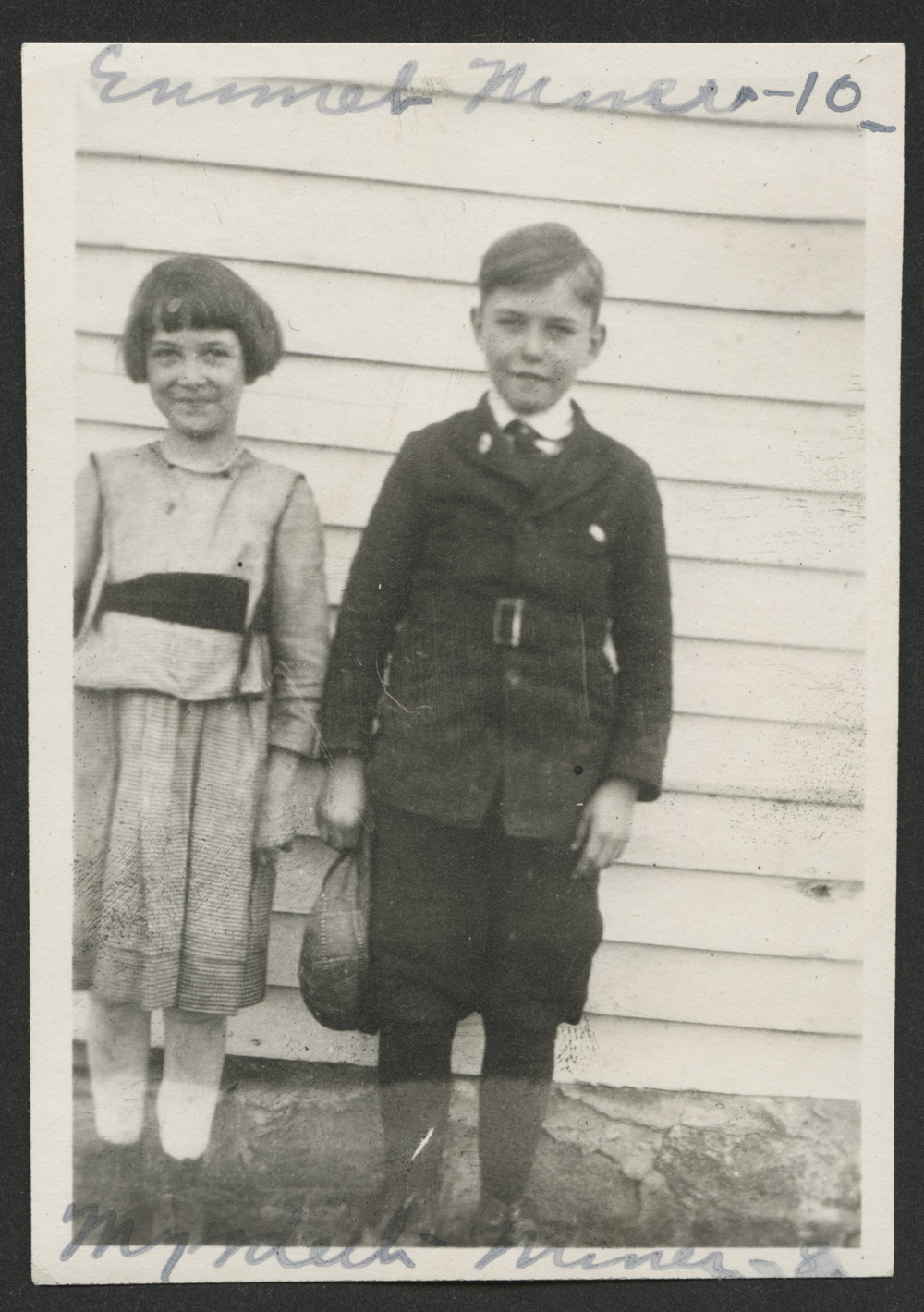
While he was getting his horse, the horse hitched to the sleigh took off, heading through the school yard south gate. Mr. Miner looked for the sleigh in the school yard. When he could not find the sleigh, he rode out the north gate thinking he would catch up with the children.

Mr. Miner soon knew that the children were lost. (See Map 1) He went home and told his wife that he was going back out into the storm to find the children. Neighbors joined Mr. Miner in the search. The searchers stayed out in the storm until dark without finding the sleigh and the children.
The next morning, word reached the people of Center that the Miner children were still missing. Several groups, including 14 men from Center, set out to search for the children. The search party looked over the land north and east of the school. Finally, the men found a track that led them south and east of the school house. They found the sleigh overturned in a coulee. The horse still stood there in the harness.
When the searchers turned up the sleigh, they found the children. Little Emmet and Myrdith still lived. Hazel had placed two blankets underneath them, and another over them. She lay close to the younger children to keep them warm, but she had no cover for herself. Hazel’s clothes were wet because she had fallen into the coulee as she tried to lead the horse to safety.
During the night, Hazel talked to the younger children. She told them to move their hands and feet, and she punched them to keep them awake. Hazel, however, did not survive the cold. When Hazel stopped moving, Emmet followed her example and kept Myrdith awake until the searchers found them at about 2:00 on the afternoon of March 16. Emmet and Myrdith recovered from their terrible ordeal. (See Image 9)
In 1936, former governor L. B. Hanna and his family purchased a stone monument to honor Hazel Miner. The monument stands at the County Courthouse in Center to honor her courage and the courage of the men who searched through the storm to find the children. The monument reads:
In Memory of Hazel Miner April 11, 1904 March 16, 1920 To the dead a tribute, To the living a memory, To posterity an inspiration The story of her life and of her heroic tragic death is recorded in the archives of Oliver County on pages ___ Book of Misc. Records. Stranger Read It.
Why is this important? Blizzards have taken many lives in North Dakota’s history. The blowing snow obscures a person’s vision and cold air chills the body temperature down to the point where all functions cease. Hazel Miner’s death is particularly tragic because it seems that it could have been prevented. If only the horse had not left the school yard by the south gate. If only Mr. Miner had seen the direction the horse traveled. If only, the horse had turned into the farmyard instead of the ditch. These are the kinds of small accidents that cause people to die in blizzards.
Hazel Miner knew what to do to keep her brother and sister warm and awake which saved their lives. With less protection and with wet, chilling clothes, Hazel could not save herself. Her selfless actions have made her a hero in North Dakota history and her death is a lesson about survival in the brutal winters of the northern Great Plains. (See Document 6 No Place Like Home mp3)



